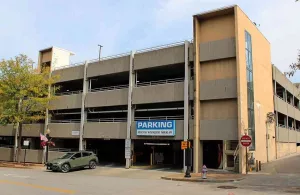$1.5 million to be used to fight blight in Butler County OH
Published by John on
There is a $1.5 million pot of blight busting money coming to Butler County and while land banks around the state are lining up, officials here say not many jurisdictions have expressed interest yet
When the state biennial budget passed, it allocated $150 million for commercial and residential demolitions and $350 million for brownfield remediation. Each of the 88 counties will automatically receive $500,000 for demolition and $1 million for brownfield remediation, which is the removal of hazardous materials left when industrial, or even commercial such as dry cleaners blight is downed.
The remaining $106 million in demolition and $262 million for brownfields will be disbursed “first come, first served.” Jim Rokakis of the Western Reserve Land Conservancy told the Journal-News the state is still working on guidelines for the money and those rules should be complete by later this month or early December.
“I know land banks are lined up like hungry animals or starved people saying where are the regs, we want to get started,” Rokakis said.
The Butler County Land Bank has been reaching out to communities hoping to line-up “shovel-ready” projects so when the first $1.5 million is consumed they can get as much of the second pot as possible to eradicate blight countywide. Officials have said the response has been a little lukewarm at this early juncture.
The county has spent about $7.4 million in state and federal money tearing down approximately 750 eyesores since 2012. Those demolitions have been almost entirely in the two big cities and grant restrictions excluded commercial demolition.
Under the federal Hardest Hit Fund of the Neighborhood Initiative Program (NIP) the land bank received $4.3 million. Middletown reported in 2020 that in the previous four years they realized a 44% drop in police calls in the “NIP neighborhoods” and 51% lower drug overdose calls. The land bank report shows property values increased 47% in the areas were blight was banished
Those federal and state grant monies are gone but the commissioners agreed to siphon 1 percent of DTAC funds, which are late payment penalties on real estate taxes, in 2014, which opened up land bank services to the rest of the county. The land bank has invested about $236,000 doing demolitions in Madison, Ross, St. Clair and Wayne townships, Fairfield, Hamilton, Middletown and Trenton with DTAC funds and has an account balance of just over $1 million.
Butler County Treasurer Nancy Nix, who is chairman of the Land Bank board, said she hopes more jurisdictions will take advantage of this new funding opportunity.
“I’ve always been surprised that more townships and cities haven’t been more aggressive in seeking funds …,” Nix said about previous funding opportunities. “I’ve seen so few requests over the years, it seems sort of puzzling because it’s not a difficult process.”
She said they have had talks with Middletown officials about the new funding source. Middletown officials have also asked the county commissioners for $6.6 million to help the city “transform and redevelop” the Ohio 4 corridor entrance to the city and also support the Oakland Neighborhood revitalization. She said a priority is $2.38 million to complete demolition, preparation and remediation of the 14-acre fire ravaged Paperboard site.
“From the land bank’s point of view we would seriously love to help with Middletown Paperboard,” Nix said.
The board met this week to discuss some new guidelines of their own for disbursing the new-found funds for residential and commercial properties. New Executive Director Seth Geisler said there shouldn’t be any matching fund requirements in the first pot of state funding, but they believe there may be a 25% matching grant requirement if the county secures any of the $368 million in competitive grants. He proposed the land bank cover the cost for jurisdictions that cannot afford it.
Kathy Dudley, who headed the Land Bank for several years and serves as the board secretary, told the Journal-News they have followed that policy previously, for example the board helped tiny St. Clair Twp. remove three eyesores in 2018 at a cost of $35,126, no matching funds were required.
Conversely, the board this week approved $22,200 to help Fairfield get rid of a former beauty salon at Ohio 4 and Seward Road. The city’s match was $5,000 plus the $250,000 it spent buying the property.
“In the past our practice has been when they apply the local jurisdictions usually have skin in the game,” Dudley said. “But I think there is some discussion there are some places that might not necessarily have the funds or a funding sources for demolition or acquisition.”
The board tabled the issue until they have guidance from the state.
“Shouldn’t we wait until we get the guidelines from the state and what the restrictions are,” County Administrator Judi Boyko said. “Then we can tweak what monies we have available so we can assist with or supplement (matching money).”
The county commissioners have committed to boost economic development throughout the county and clearing eyesores is an important first step. Several jurisdictions told the Journal-News previously they would be willing to participate in the new program, once they know the parameters.
Journal-News




